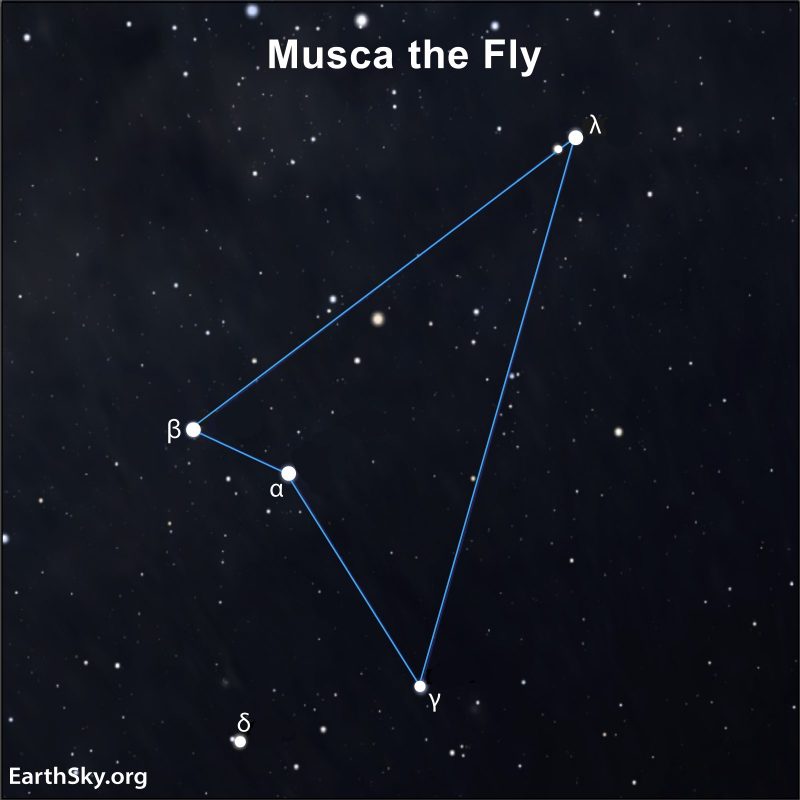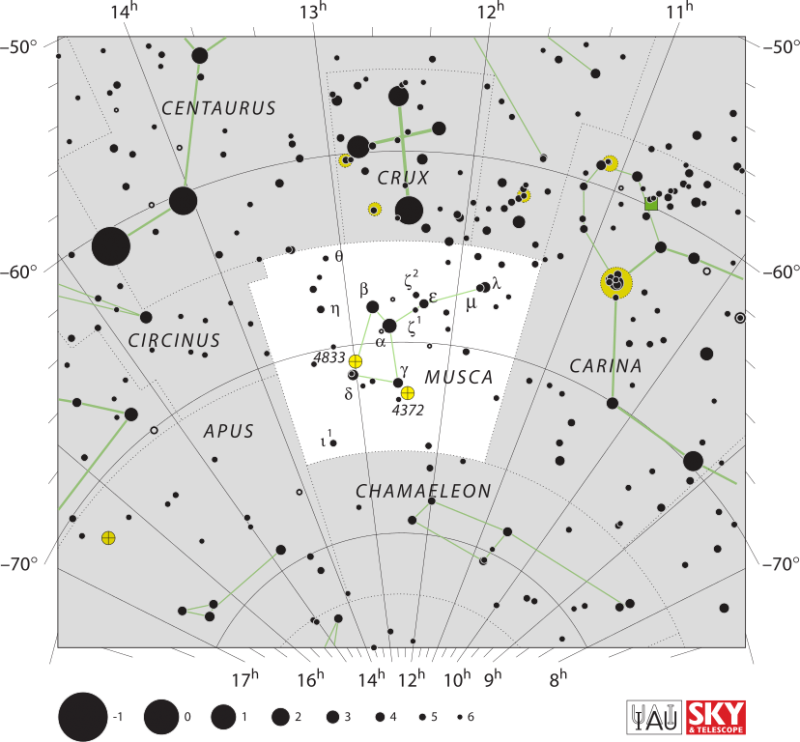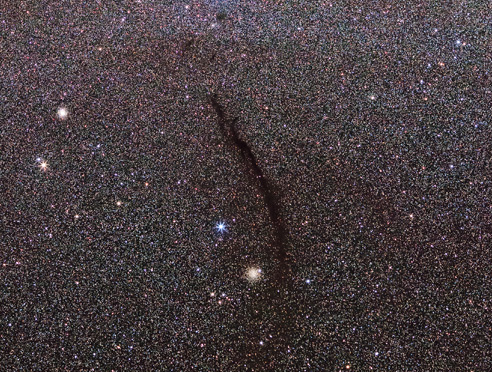
The constellation of Musca the Fly lies deep in the Southern Hemisphere sky. As a south circumpolar constellation, it circles closely around the south celestial pole and therefore does not set. Thus, people who live on the southern half of our globe can view it at any time of the year.
The origin of Musca the Fly
Pieter Dirkszoon Keyser and Frederick de Houtman created the constellation of the Fly in the late 1500s, along with 11 other Southern Hemisphere constellations. These Dutch navigators explored the Southern Hemisphere and took astronomical observations, naming the new constellations after creatures they met on their travels. Sometimes Dutch astronomer Petrus Plancius gets credit for naming the constellation based on the observations from the Dutch navigators.
Musca is one of few constellations that actually looks like the object it was named after. Some maps draw the lines in the dot-to-dot stars of the constellation so that it looks less like a fly and more like an axe.
Locating the constellation of the Fly
You can find the constellation Musca any time of year in the Southern Hemisphere near the well-known Southern Cross, or Crux, and the south celestial pole. Musca is just below the foot of the cross and has fairly bright stars. It is the 77th smallest of the 88 constellations.
The stars of Musca the Fly
Musca the Fly lies against the background swath of the Milky Way. The brightest star in Musca is the magnitude 2.69 Alpha Muscae, which is located 315 light-years from Earth.
The second brightest star lies just over one degree away. Beta Muscae, at magnitude 3.05, is also quite distant at 340 light-years away from us.
Two stars lie a little more than three degrees from Alpha, to the south of it. These stars are Gamma Muscae, which has a magnitude of 3.87 and is 325 light-years distant, and Delta Muscae, at magnitude 3.61 and a distance of 91 light-years. Delta Muscae is the closest of the brighter stars in the constellation.
Two more stars of note lie quite close together: Lambda Muscae is just 16 arcminutes from Mu Muscae. Lambda is the brighter of the two at magnitude 3.63 and at a distance of 127 light-years. Mu is magnitude 4.75 and much further at 450 light-years.

Deep-sky objects in Musca
Despite its location along the Milky Way, Musca contains none of the Messier objects. Charles Messier was a French comet hunter in the 1700s. He made a list of fuzzy objects that could be confused with comets. Today we know those fuzzy objects as clusters, nebulae and galaxies. Because he made his observations from France, he could not see far enough into southern skies to spot Musca and the other constellations around the south celestial pole.
But Musca does indeed have notable deep-sky objects. NGC 5189 is the Spiral Planetary Nebula, and it shines with a magnitude of around 8. NGC 4833 is a fine globular cluster at magnitude 7.8. Another observing target is the Engraved Hourglass Nebula in Musca. It’s one you may have seen before, thanks to images from the Hubble Space Telescope.
Lastly is a dark nebula with a fun name: the Dark Doodad Nebula. This cloud of gas and dust blocks out background stars. It spans the length of six full moons and you can see it with binoculars.


Bottom line: Musca the Fly is a constellation that lies deep in southern skies and circles the south celestial pole, making it visible any night of the year from the Southern Hemisphere.
The post Meet Musca the Fly, a southern constellation first appeared on EarthSky.
0 Commentaires